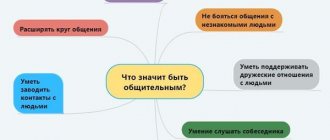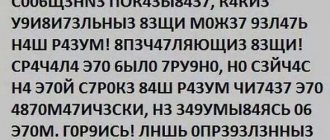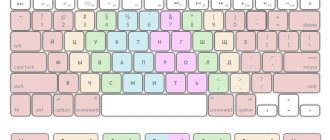Slow (close) reading is a practice that counters the passive and mindless consumption of information. Unlike speed reading, which promises to teach us to read 100, 200, 300 books a year, or school reading, which gives ready-made formulas and answers to all questions, slow reading involves a deep, complex immersion in the text and independent, responsible work with it.
The birth of this practice is often associated with the slow movement that emerged at the end of the twentieth century. Its supporters strive to slow down the pace of life, which has greatly accelerated recently, in all its spheres - from food and travel to fashion and science. However, the phenomenon of slow reading arose much earlier.
Around 200 AD, Judaism developed a method of oral commentary on the Torah, which was accompanied by meticulous reading of the sacred texts. Starting from the smallest details, word combinations and phrases, rabbi-interpreters tried to discover new, previously unnoticed and at the same time more accurate meanings in the words given by God. Subsequently, this activity became a tradition and was called “midrash”; the verb “darash”, which is part of the root of this word, means “to demand, to find out, to inquire.” Later, Neoplatonists began to interpret texts in a similar way: philosophers like Proclus or Damascius wrote huge commentaries, sometimes taking up a thousand pages, to individual dialogues of Plato. Their research became an example for philosophers, philologists and theologians for a long time.
Friedrich Nietzsche was one of the first to notice the lack of thoughtful reading in an era of increased speed of life. In 1881, in his seminal work, Morning Dawn, he wrote:
“That is precisely why it is now more necessary than ever, precisely because it attracts and fascinates us, in our age of “work,” an age of fussiness, an insane age that does not spare the forces of haste, an age that wants to do everything and cope with everything. everyone, with every old and every new book. Philology does not manage everything so quickly - it teaches you to read well, that is, slowly, peering into the depth of meaning, following the connections of thoughts, catching hints, seeing the whole idea of a book as if through an open door...”
In the twentieth century, the practice of slow reading gained a second wind, becoming an indispensable component of many literary critical movements. For example, in Russia a formal school appeared that insisted that in literature, what is primarily important are formal, stylistic elements that need to be carefully analyzed. In France, Marcel Proust took a similar position: in his essay “Against Sainte-Beuve” he wrote that the text is primary, and not the personality of its author. Later, this idea was picked up and developed by his compatriot Roland Barthes in the landmark essay “The Death of the Author” (1967) for structuralism.
In England, Thomas Stearns Eliot spoke about the same thing.
In his opinion, a novel or poem is an independent aesthetic object. Its meaning is revealed only in itself, in the interaction of its components, so it requires careful reading.
The same point of view was shared in the United States by the so-called New Critics, including Clint Brooks and Robert Penn Warren, who published Understanding Poetry in 1939 and Understanding Prose in 1943. The methods of close reading proposed in these works shaped American education for several decades to come.
One of the brightest American professors who taught their students to read slowly was Vladimir Nabokov. “Literature,” he said in his famous lectures, “real literature should not be swallowed in one gulp, like a drug useful for the heart or mind, this “stomach” of the soul. Literature should be taken in small doses, crushed, crushed, ground, then you will feel its sweet fragrance in the depths of your palms.”
At the turn of the 20th and 21st centuries, the practice of slow reading faded into the background in literary criticism. However, readers continue to gather in book clubs and organize reading groups, where they analyze classic texts in different areas (and some even earn a lot of money from this). However, such group reading gives a good result only if each participant carefully read and worked through the text, otherwise such meetings turn out to be superficial. And slow reading is an activity that deserves a responsible approach.
A piece of experience
Let's get straight to practice, and analyze the problem and draw conclusions later.
Game 1. "Comic". For a fairy tale or story that we are going to read to a child, with a child, or to give to a child to read independently, we draw several pictures in advance (you can pick up pictures on the Internet and print them out). Then there are three options:
- read the text and then put the pictures in order;
- we read the text, then look at the laid out pictures and retell it;
- first we look at the pictures, try to understand from them what is happening in the fairy tale (story), read the text and compare it with our guesses.
Game 2. "Tail". We read the story and... stop at the most interesting place. Now let’s figure out how it could end. Then we compare our version with the original. We can do it a little differently: we come up with a continuation for a fairy tale we’ve already read—a new “tail.” What could happen to the heroes next? What new characters might appear in this story?
Game 3. “Theater at the microphone.” The child reads aloud - you can take turns with the parent - and all this is recorded on a voice recorder. It’s especially good if the text contains dialogues - you can read it by role. Then auditions are held. You can set up a home theater and act out entire scenes from books in costumes.
Game 4. “Invisible”. Read aloud, skipping key words. The child tries to understand which word is missing and comes up with it himself, based on the context.
There are entire sets of exercises on the Internet for the development of conscious (conscious) reading, not related to a specific text, but made up of special sets of words. Children learn to find commonalities and differences in words, name groups of words with one word, look for which word is superfluous in the line of sentences, how words are similar, create new words themselves from existing syllables, and so on. Find these exercises, they are very useful.
For example, here: infourok.ru or maam.ru.
Now let's talk.
Construction and cohesion of sentences
Understanding how sentences are constructed may seem like a skill required for writing. The same can be said about the joining of ideas within and between sentences, which is called cohesion. But these skills are also important for reading comprehension.
Knowing how ideas connect at the sentence level helps children make sense of passages and whole texts. This also leads to what is called coherence, or the ability to connect ideas to other ideas in the overall work.
How to help: Tell your child in detail the basics of constructing sentences. Work with him on connecting two or more ideas, both written and spoken.
“What’s incomprehensible here!”
First of all: if it doesn’t work out, it’s not the child’s fault. Yelling, demanding, getting angry at him is not just pointless, but very harmful. A seven-year-old boy read a few phrases, and we ask: “Now tell me what it’s about!” The child is silent. “Well, read it again... Do you understand now?” Nods. "Tell!" Silent. We begin to boil: “What’s incomprehensible here! Read, first sentence!.. Second!.. Got it?!” Nods. And his chin is already trembling. And he can’t put two words together. For the third time, he is already re-reading the simplest text, in our opinion, confusingly, confusing the syllables, placing letters and accents all over the place... And again he cannot retell it. In the future, the child will probably avoid reading, realizing that “... I read - mom is angry, dad scolds, the teacher is unhappy. So reading is bad!”
In first grade, misunderstanding the meaning of what you read can still be a problem. But the older the child gets, the more important the skill of meaningful reading will be for him. The volume of text will begin to increase, and it is no longer so important whether the young reader puts the emphasis correctly - what is important is whether he understands the meaning of the task that is written in the textbook, whether he correctly assimilates the information that they are trying to convey to him. That is, if you don’t learn to understand what you read, you’ll fall behind not only in reading, but also in math, simply because you don’t understand the terms of the problem. And then history, biology, and geography will start pouring in... Meaningful reading is the skill of assimilating any written information.
Skim Reading
To read fluently, children must recognize words instantly, including words that are read differently than they are spelled. By developing reading fluency, a child increases not only his reading speed, but also his reading comprehension.
Decoding and reading each word can take a lot of effort. Word recognition is the ability to recognize a word instantly just by looking at it, without having to read it out loud. When children can read quickly and with almost no errors, they are said to be a “fluent” reader.
People who can read fluently read smoothly and rhythmically. They use context to understand meaning and change the tone of their voice depending on what they are reading about. The ability to read fluently is critical to good comprehension of text.
How to Help: Word recognition can be a big barrier for beginning readers. Typically, a person needs to see a word from 4 to 14 times to learn to recognize it automatically. But, for example, children diagnosed with dyslexia may need to see a word up to 40 times.
Many children have difficulty reading fluently. To improve word recognition and other reading skills, children need help and a lot of practice. The best way to strengthen these skills is to practice reading books. It is important to choose books that are appropriate for your child's reading level.
Who is guilty?
What causes poor reading comprehension? Why do our son and our daughter read and not grasp the meaning?
The first possible reason is health. We take into account the child's condition. Is everything okay with his speech apparatus, with his vision, with his concentration? Are there any disorders of brain activity that affect memory, attention, behavior, perception? Does he suffer from chronic diseases - problems with breathing, digestion, oxygen metabolism? Maybe right now the child is experiencing a hormonal surge and is not at all interested in reading? Or perhaps the process of reading itself is still difficult for him for health reasons, and in order to reach the next step, some physiological problems must first be solved.
The second reason is time. Children mature differently. Some people at the age of four have already read all of Robinson Crusoe and are enthusiastically playing Desert Island, while others are still mastering the ABC book at eight years old. Some people’s horizons, imagination and vocabulary are such that even in kindergarten they already compose fairy tales themselves, constructing complex phrases with lengthy descriptions, while others, even in the second grade, when asked to talk about a painting, limit themselves to one thing: “Beautiful!” It's not good, it's not bad, it's individual. Some kids just need a little more time.
The third reason is habit. This is our parental responsibility. We are too carried away by the “shell”. We taught the child letters, instilled the skill of reading syllables, then taught them to read fluently, paid attention to articulation, intonation, and completely lost sight of the very essence: every word, every text carries meaning! Information! And you need to be able to understand and assimilate it.
The fourth reason is fatigue. What is the child's workload? “Drama club, photo club, choir club - I want to sing, everyone voted for the drawing club too...”? Do we want to make Leonardo da Vinci out of our child and develop him in every possible and impossible way? Or, on the contrary, we focus on one thing - reading, for example, but the emphasis is so powerful that “You, you idiot, will sit over the book until the night, until you succeed!” We shift our unfulfilled ambitions onto the child, forcing him to study with all his might, forming in him the “excellent student syndrome”: “I must meet the expectations of adults in everything.” But the result is often the opposite: stress, fatigue, poor performance, even neuroses.
How to teach a child to read quickly and understand text
A modern parent has many obligations: in addition to providing his child with everything necessary, he must also monitor his progress. Checking homework even for those children who study well takes a lot of time. Because of this, it is not always possible to pay attention to any additional training at home. Therefore, many adults give preference to various children's centers that offer classes in areas of interest.
So one of the most useful options is speed reading. In such classes, children not only learn to read thoughtfully, but also increase their amazing speed of perception of information. Thanks to such courses, you can achieve reading up to a thousand words per minute, which makes studying at school much easier. Such activities also work well with the fact that a child does not remember and does not understand what he reads well. Thanks to this, interest in books increases, because getting to know them ceases to cause difficulties.
But in order for additional classes to bring noticeable results, it is important to choose a children’s center where training is conducted using time-tested methods. It is worth giving preference to those proposals that have long proven their effectiveness. Then the formation of the child’s reading skills will be as productive as possible.
For a schoolchild, learning to read quickly and efficiently is an excellent investment in his future. In the future, the acquired skills will allow you to easily prepare for final exams and admission to a specialized educational institution. The ability to read a page of printed text in a few seconds will come in handy many times in adult life, because this skill remains forever.
What to do?
Is there anything we can do to help the child? Can.
First of all, we don’t run ahead of the locomotive. If our child is under five years old, we don’t rush to teach him to read! First, you just need to “talk” to the baby: develop his speech skills, work with speech defects and reduce them to a minimum. And only after that you can start. Not earlier!
Secondly, we ourselves - parents, grandparents - should also read. For myself, but in his presence. Both out loud and to myself. It should be imprinted in the child’s mind: a person who reads is normal. Reading is like eating, drinking, breathing. Everyone does this; it is a common activity for any adult, and therefore for any child.
Thirdly, we read to the baby himself. We take beautiful, interesting children's books with pictures, printed in large print, so that the child sits next to him and also sees the page. We encourage our little listener in every possible way to ask questions, which he will probably ask after reading the book. And we answer them in detail and clearly.
This is all before the age of five.
But now we have a preschooler, a first-grader, or even a second-grader, and now we are quite “legitimately” concerned with conscious reading. What are we doing?
We put aside all the cards with pictures, all the cubes with letters, all the wall and tabletop posters, where an object is drawn next to the letter: “m - ball”, “b - butterfly”, “o - glasses”... It is important for us to make sure that our reader is all remembers letters regardless of prompts. Let's give him a small text on a piece of paper and play: let him find and cross out, for example, all the letters "p" with a pencil. Or all the letters "a". Or he will cross out all the familiar letters and circle all the unfamiliar ones. Then we will repeat these unfamiliar letters, reinforce them and make sure that the child knows the alphabet.
What should we read? Firstly, something interesting in content and at the same time not containing words that are complex in meaning - outdated, too “adult”, too long, abstract. Secondly, something consisting of short (no more than five words) phrases. Thirdly, the text is printed in large font.
Where can I find such texts? We type in the search engine “texts for preschoolers’ reading comprehension.” Among the links there will be pictures, cards, and texts with drawings - this, by the way, is also a good help for meaningful reading, when small “icon” pictures are inserted among the words, and the child no longer reads the letters that make up the word, but names the object, realizing at the same time the meaning of the entire phrase.
Here are some links. These resources provide texts for different ages:
• About Speech. ru • “Speech therapist” • Blog of Galina Bikmullina
True, we will have to print the proposed texts ourselves, choosing a large font.
Decoding
Decoding is an extremely important step in the reading process. Children use this skill to sound out words they have heard before but have not seen written. Decoding ability is the foundation of all other reading skills.
Decoding relies on one of the first language skills to develop: phonemic awareness (this skill is part of a broader set of skills called phonological awareness). Phonemic awareness allows children to hear and distinguish individual sounds in words (also known as phonemes). It also allows them to “play” with the sounds in syllables and words.
Decoding also relies on the ability to match individual sounds and letters. For example, to read the word “sun,” a child must know that the letter “s” sounds like “s.” Understanding the relationship between letters and sounds is an important step in “sounding out” words.
How to help: Many children master phonological awareness skills naturally: by reading books, listening to songs and poems. But for some children it's not so easy. In fact, one of the early signs of reading difficulties is trouble rhyming, counting syllables, or identifying the first sound in a word.
The best way to help your child strengthen these skills is to guide them with precise instructions and lots of practice. Children need to be taught how to correctly identify sounds and work with them. You can also develop phonological awareness by playing word games, reading poetry aloud to your child, or using special computer techniques aimed at developing phonemic awareness and decoding.
"Why so slow?"
Primary schoolchildren take speed reading tests several times: you need to read at least a certain number of words per minute, and then you will meet the age standard. We don’t have such a task. What matters to us is not how much we read, but how much we understand. Therefore, no matter how painfully slow a child reads for our ears, we do not push him. On the contrary: we can stop to record the “intermediate result” - ask again, clarify the plot, ask to be reminded what was discussed in the read line... It is easier for a child to memorize in “pieces” than all at once. And getting used to reading consciously this way, in small fragments, is also easier. And, accordingly, it is more convenient for us to control the assimilation of the text.
That's all: “Sit up straight! Stop fidgeting in your chair! Take your elbows off the table!..” - no need now. We do not yank the child after each word for reasons unrelated to reading. Make it comfortable for him to read. If he wants to run his finger along the sheet, let him move. If you want to put a ruler under each line, let him put it under it. It is more convenient to read not at the table, but in an armchair or sitting cross-legged on the sofa - let him read where it is more convenient.
Expanding your horizons and argumentation
Many children connect what they read with experiences they've already had, so it's important to broaden your child's horizons so that he has some idea of the world around him before he starts reading. It is also important to teach your child to “read between the lines” and find meaning where it is not literally written.
How to help: Your child can expand his horizons by reading, communicating, watching films and TV series, and getting to know works of art. Also, many things come with years of personal experience.
Open up opportunities for your child to gain useful new knowledge in different areas and discuss with him what you have learned from the experiences you have gained, both together and separately. Help your child make connections between new and old knowledge and ask questions that require detailed answers and thoughtful explanations.
You can also read these tips on how you can use cartoons to help your child learn to draw conclusions for themselves.
Gradual Adoption Model
If you are a parent or educator, you can use the "gradual introduction model" to help a student with autism spectrum disorder learn strategies for reading comprehension. First, show your student how you read using this strategy. Then use this strategy together, with your guidance. Then ask the student to use the strategy again (in a different situation) on their own.
Make sure you discuss with your student the reading and whether the strategy is helping them or not. You may need to model this strategy for the student many times, or practice it together many times until it becomes a natural part of the reading process and the student can use it completely independently.
Speed reading courses
The exercises presented above are designed for self-learning speed reading. If self-discipline is poor for you, consider enrolling in special courses. Under the guidance of an experienced trainer, the process will go much faster. He will correct mistakes, share advice, and help you not lose motivation.
Today, in every big city there are speed reading courses where you can study in groups and individually. If you don’t want to waste time traveling there and back, I advise you to take a closer look at online courses. Besides everything else, they are also cheaper.
Speed reading – Wikium
Speed reading is a course on a popular platform for brain development. It consists of 21 lessons, which include theoretical information and exercises on special simulators.
The course will help you:
- learn to turn on concentration to the maximum;
- develop the skill of effective attention management;
- improve reading comprehension;
- increase memory capacity;
- and, of course, increase your reading speed several times.
The cost of the course is 1,490 rubles.
Effective Reading – Advance
The Effective Reading course was developed by specialists from the Russian-famous Advance educational technology center. The center is famous for its proprietary methods of effective teaching, based on innovative developments in the field of pedagogy, psychology and neurophysiology.
The program consists of 16 lessons, lasting 80–120 minutes. During the training, the emphasis is on developing concentration, synchronizing the work of the two hemispheres of the brain, memory training, and replenishing vocabulary. The icing on the cake is working on reading aloud and developing diction.
Tuition fee – 14,900 rubles. You can take a trial lesson for free.
Fast reading and effective assimilation of information – 4brain
Quick reading and effective assimilation of information - a course developed by the 4brain service team. It was created specifically for people who interact with large amounts of text information. Well, for those who strive for constant development and growth.
How the training works:
- You take a special test that identifies all the factors that slow down the reading process.
- Based on the test results, the program creates an individual training program for you.
- Every day you will be asked to complete several tasks to develop your speed reading skill. They will take 20–30 minutes.
- During your training, you will also need to take intermediate tests to evaluate the dynamics and, if necessary, adjust the program.
- At the end you have to take a big final test. Several days will be allocated for this.
The total duration of the course is 4 weeks. Upon completion, a diploma is issued, which will indicate the results of the final test. Tuition fee – 1,990 rubles. After payment you will have a week to test the course. If you take no more than two classes and decide that the course was not suitable for you, you will receive a refund.
Find more training programs in our selection of online courses on speed reading.










